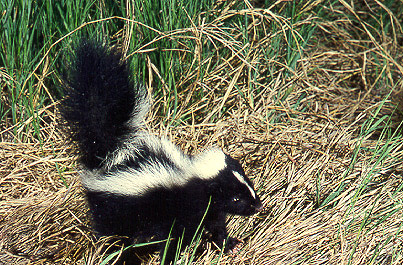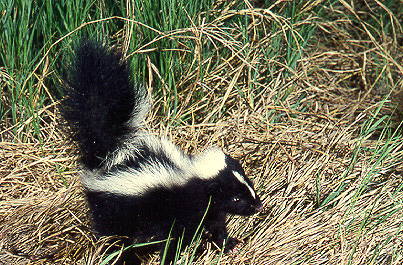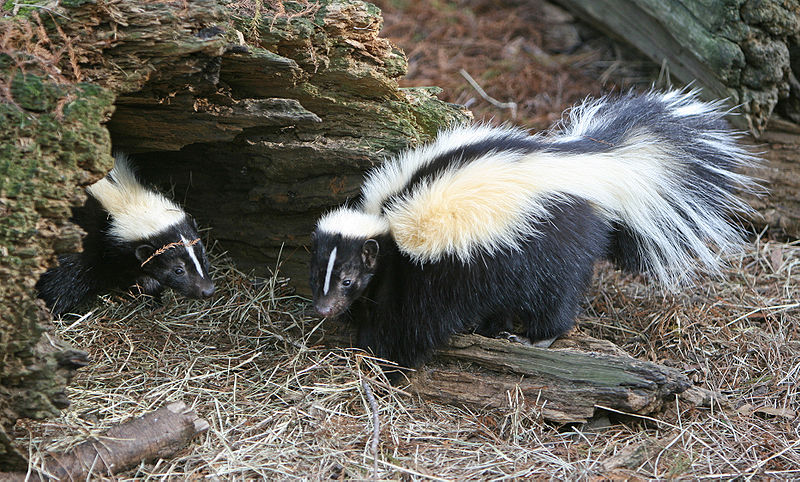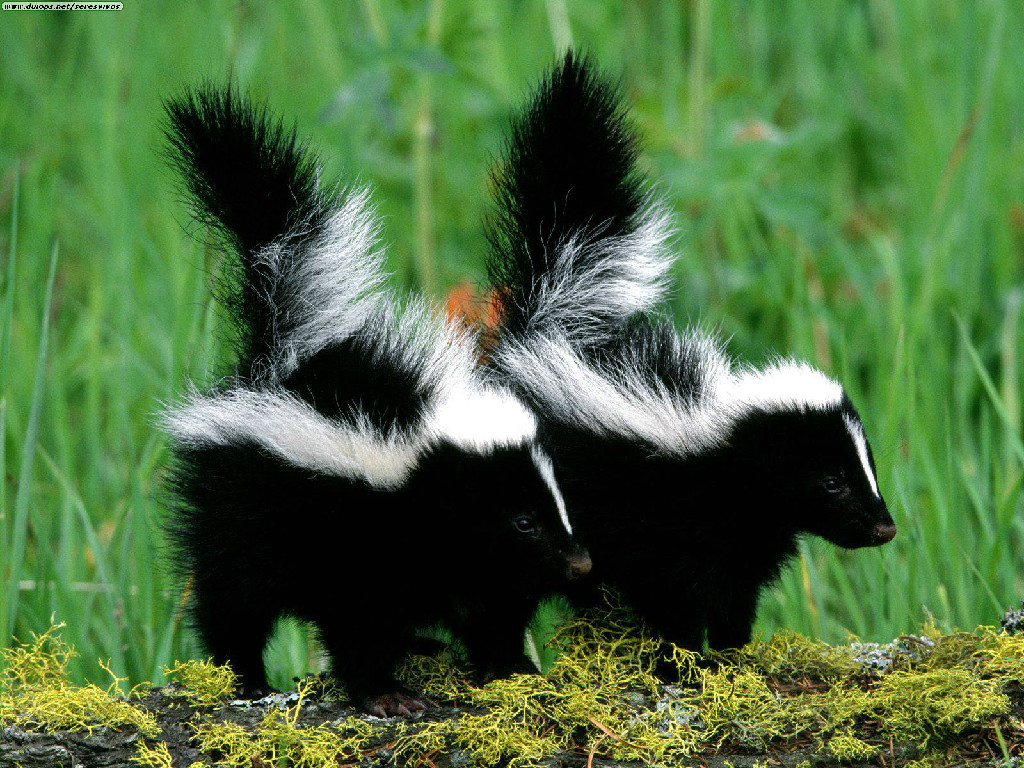
Striped Skunk: (Mephitis mephitis)
The striped skunk (mephitis mephitis) is a member of the mustelidae family. They vary in size, averaging between 15 to 37 inches long and weigh between 1 to 18 pounds.
The striped skunk has a color patter that is black fur with a thin white stripe along the center – top of their snout and forehead as well as the white markings on their nape. This white marking running down its nape and dorsum splits in to a thick V – shape as it approaches it hind end. They have elongated bodies, small heads. Their nose is short and round. They have short legs and bushy tails with a combination of black and white fur. Their front claws are very sharp and long. They also have 34 sharp teeth. Striped skunks are found throughout Florida, however you will not find them in the Keys. Their preferred habitats that are located in bushy fields, weedy pastures, disturbed areas and in residential areas.
Striped skunks are omnivores, consuming both plant and animals. Their primary diet consists of insects, larvae, earthworms, grubs, lizards, small rodents, salamanders, frogs, snakes, moles, birds and eggs, berries, roots leaves, grass, fungi and nuts with them favoring honeybees. The changes it diet as the seasons change.
Striped skunks are nocturnal. Skunks are notorious for their anal scent glands which they use as a defense weapon, when threatened or frightened they will release a projectile foul smelling oil secretion from their anal glands. They have two glands, one on each side of the anus, these glands produce a mixture of sulfur – containing chemicals such as thiols, traditionally called mercaptans. The odor of the fluid is strong enough to ward off any potential predators. This oily secretion is difficult to remove from clothing. Although they use this spray as a defense weapon, it is not harmful to humans, pets or livestock. Striped skunks are reluctant to use their spray, as they produce enough of this chemical for approximately 5 or 6 sprays. If they happen to use their supply, it will take 10 days to produce and supply. Striped skunks communicate with each other through movement and scent marking. Striped skunks will den in abandoned armadillo or gopher tortoise burrows, even though they can dig their own burrows. Their dens are usually found in brush, wood piles or areas that have tall overgrown grass. Striped skunks can breed as early as 11 months old, which is between March and April, however in the southern states some females will breed during May if they did not mate or lost their litter. In some cases having 2 litters during the year, but normally breeding once a year. The litter is size varies, producing up to 10 young most often averaging 5 to 7 young. Their gestational period is approximately 59 to 77 days long. When the young are born they are blind and helpless. Their bodies are covered with fine fur, clearing displaying its black and white markings. Their eyes begin to open around 3 weeks and they begin to walk and play when they are around 3 to 4 weeks old. The male skunks play no role in raising or teaching the young. The mother is very protective of her young and will spray at any sign of danger. The young stay with the mother for several months before they emerge out on their own. The young are completely weaned by the time they are 6 to 7 weeks old, at which time they begin to follow their mother in a single file line, out of their den and begin to learning to hunt. Skunks have been known to carry many parasites, and diseases this includes rabies.
Skunks become a nuisance when their burrowing and feeding habits conflict with humans. Causing damage from burrowing under porches or buildings by entering foundation openings. They dig holes in lawns, golf courses and gardens searching for food or for burrowing.


